Introduction to braces
Imagine sitting in an old, rusty chair with a beady-eyed stranger holding sharp tools and pointy objects at your teeth. While this imagination may bring chills down your spine, we haven’t even begun discussing the harsh realities of dental procedures in the past. Due to lack of research and scarce dental breakthroughs, dentists are often portrayed as madmen trying to pull out teeth after teeth without proper equipment or tools. 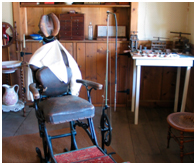
Most people today still object to the fact that they have to visit their dentist due to cavities, tooth pain or any other dental issue, whether people admit it or not, but we are lucky to exist in an era of technology and modern medicines. Unlike the present, dentists in the past did not know about numbing agents that disable your teeth from feeling pain, so their patients had to brave through dental procedures whether they liked it or not.
The invention of braces
Did you know, braces date back to more than 300 years! Dental braces are devices that are utilized to bring your teeth back to their original alignment, or to correct your misaligned jaw that prevents certain problems that may occur in the future and at certain times, to even walk away from tooth pain.
Even though the history of braces dates back to the prime Greek era, we can say that by 1700s, Orthodontics were en route to finding a way to straighten teeth. Their search came to a conclusion in 1728 when a French dentist by the name of Pierre Fauchard who is often called as the father of modern Orthodontics published a book that openly discussed methods and practises that straightened teeth.
It seems rather bizarre to credit the advancement of dental breakthroughs to a single dentist from the past, since this is rightly owed to several different people who came up with their solutions and methods that practically shape the world of orthodontics today. However, one name stands out in the open and he is known as Christophe-Francois Delabarre who came up with the word “braces” by 1900s.
But this doesn’t mean that the idea of braces was not contemplated in the past. When modern scientists scraped through ancient mummies in their tombs, they discovered a metal wire running through their teeth. This often came as a surprise to orthodontics, who were flabbergasted by the idea that even the Egyptians cared a lot about social standing and worried about improper alignment of teeth.
Why do we want braces?
We all remember Mr.Bean’s visit to the dentist, right? While that is far from reality, we’re here to make you understand that dentists aren’t that evil at all. They don’t excite themselves by intentionally giving you pain, so you don’t need to be alarmed at any point.
Having a set of improper teeth is unfortunate, but this doesn’t mean that you’re stuck with them in your entire life. Thanks to modern advancements and breakthroughs in Orthodontics, you have a variety of methods and practises that can straighten/align your teeth and help you smile cheerfully.
Some of us are shy to smile in the open, and it’s understandable why you might think this way. Society chases everything that is perfect, whether we talk about teeth, face, eyes or even a person’s body.
While we’re far away from accepting every person as they are, you can go for braces to allow wide smiles and those pearly whites that haven’t seen the light of day in years. Some of you may not choose braces because they make a person stand out from a crowd. A steel wire that runs across your teeth is quite visible to people, and it’s understandable that you may not want braces because they just look odd.
That’s why technology is known as merciful, it creates inventions upon inventions to make people convenient with living their lives. For people who do not want traditional steel braces, they have the option of choosing Aesthetic Braces.
Both fixed and removable braces could be nearly invisible to the naked eye because of their colour and placement. Before you jump to the conclusion that clear braces don’t work like traditional braces, we would like to calm you by saying that they both work the same way since the output is similar: straighten teeth.
The World of Aesthetic Braces
The thought of a person operating on your pearly whites is a scary thought indeed, but you should know that this person is not just any stranger. This fact may go unnoticed or unheard, but studying dentistry is a technical and difficult process. So, relax and discover the world of the Clear Braces.
First, let me introduce and highlight the types of braces that exist out there. As mentioned earlier, even braces are undergoing intensive research to find a more flexible and convenient solution for the patients. 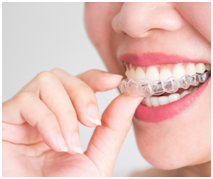
The first type is known as Clear Aligners, like Invisalign, a removable brace that’s a popular choice for people worried about their image the most. Well, why wouldn’t you be worried about how you look? In fact, that’s all that matters! Anyway, let’s scout back to our transparent, plastic brace.
Did you know? Aligners, like Invisalign, are custom-made for you, and they’re unique for your jaw. The prime reason why people prefer Invisalign over traditional braces is because they are extremely discreet, making them the better alternative out there. Of course, just like everything Invisalign has their fair share of pros and cons, but we’ll rest that debate for later.
The second type of braces out there are known as LingualBraces. Although hard to pronounce, these braces attach to the side of your teeth that’s closer to the tongue. Don’t worry though, because no one will be able to see those hiding behind your teeth, however sometimes they may peek through the little gaps that exist between them.
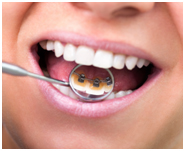 These braces are almost like the normal braces, since the purpose of lingual braces is to align your teeth little by little. The time and the dental sessions it might take to fix them in your mouth differs from dentist to dentist, depending on their experience. Here we need to say, that lingual braces are also custom-made.
These braces are almost like the normal braces, since the purpose of lingual braces is to align your teeth little by little. The time and the dental sessions it might take to fix them in your mouth differs from dentist to dentist, depending on their experience. Here we need to say, that lingual braces are also custom-made.
The third type of braces are the ClearBrackets,
like Six Month Smiles.These braces look almost like the traditional braces that orthodontists use. The difference is that like the aligners they are entirely discreet for the naked eye as they are made of ceramic or material similar to plastic.
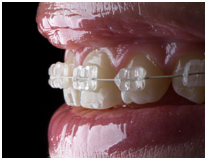 Next up, we have the famous Retainers which are known and used by countless people in the world. While it’s understandable that you may doubt whether retainers belong in this section, you’re actually right. Retainers aren’t braces, per se, but they belong in the same area so it’s necessary to shine some light upon them as well. The job of retainers begins when the duty of your braces end, but don’t underestimate their importance.
Next up, we have the famous Retainers which are known and used by countless people in the world. While it’s understandable that you may doubt whether retainers belong in this section, you’re actually right. Retainers aren’t braces, per se, but they belong in the same area so it’s necessary to shine some light upon them as well. The job of retainers begins when the duty of your braces end, but don’t underestimate their importance.
They are used to hold your teeth firmly in the new position that they now find themselves in. You can generally expect to find two types of retainers out there. The first is the fixed ones which are permanently attached at the back of your front teeth, they cannot be removed or replaced like the second type we are about to discuss. The second is the more flexible one, they are known as removable retainers.
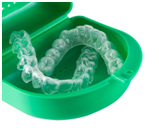 Often known as “mouth guards”, removable retainers can easily fit on your teeth to hold them in position. Plus, you can always take them out since that’s their prime purpose. The retainers have to be worn strictly for a short period of time, then you can remove them to wear only for nights. The best thing about retainers is that once your mouth becomes used to how they feel you won’t feel their presence.
Often known as “mouth guards”, removable retainers can easily fit on your teeth to hold them in position. Plus, you can always take them out since that’s their prime purpose. The retainers have to be worn strictly for a short period of time, then you can remove them to wear only for nights. The best thing about retainers is that once your mouth becomes used to how they feel you won’t feel their presence.
However, the rules for the retainers are strict as well. If you become lazy and forget to wear your retainers repeatedly, your teeth will start moving like ants when someone drops food for them. Jokes apart, it’s important and we’re sure your doctor will guide you correctly.
The Importance Of Braces
So, do you even need braces? Is it okay to let those crooked teeth stay the way they are? Can you let your misaligned jaw slide? Since this is the way you grew up and it’s all natural? Well, once we present science, backed by statistics on why braces are necessary we’ll let you be the judge.
1. Crooked teeth:
Not many people know this, but crooked teeth wear out faster than normal ones. As this reduces their strength, they may start chipping out in addition. This will not happen in a course of one or even two years, but you may end up with little stumps in your mouth.
2. Bad breath:
Do you ever wonder why some people always have bad breath? Well, bad breath can result from various factors, but bacteria stuck between your teeth is a major contender.
When brushing your teeth, notice how difficult it is to get your way across teeth that aren’t visible in plain sight. This often results in bacteria that hangs around over time to cause gum inflammation or tooth decay.
3. Psychological effects:
If you have perfect teeth you won’t understand how difficult it is for a person with crooked teeth to laugh or smile. Due to their improper teeth, they indulge in self-degradation and begin to feel bad about themselves due to something that’s not their fault.
People may regard crooked teeth as a minor issue that can be fixed with a procedure or two, but for some individuals it can be a serious matter that causes them to become depressed. Moreover, some even choose to avoid conversations altogether, so they don’t have to show their teeth ever.
This is especially widespread amongst teenagers and young adults who suffer from social anxiety and depression the most. Which is why braces are extremely important for people who have misaligned teeth. It’s a serious matter which deserves an immediate concern.
4. TMJ problems:
You may have heard about bad breath, but what is a bad bite? In the medical world, it’s known as Malocclusion in which the person’s specific teeth suffer damage due to
the extra pressure. This can also lead to chipped teeth, which further reduce the attractiveness of one’s teeth.
If left unattended, things can go pretty bad. Leading to an oral condition known as Temporomandibular Joint (TMJ) Disorder. This is a disorder in which the person suffers from jaw pain. In conclusion, a bad bite can make eating a pain.
5. Headaches:
Very Well Health reports that due to the nerve connections in your brain, most toothaches can be the cause of your headache. Have you ever thought why your head constantly feels locked when you experience tooth pain? You’ve hit the spot then, my friend, and this indicates that you clearly need to see a dentist to have your teeth checked.
I can go on and on why people, especially adolescents and children need braces, but I believe that these reasons are enough to make you understand why crooked teeth, spaced teeth, teeth that are out of position and crowded teeth would benefit from having braces to avoid short-term and long-term problems and diseases.
